Lares: Roman Household Gods That Protected Home And Family
A. Sutherland - AncientPages.com - Many ancient cultures worldwide believed in someone protecting the home and looking after the entire household and the family members.
In some ancient cultures, the people had a domestic or hearth goddess. Brownies were household spirits from Scottish folklore and ancient Egypt. Taweret was considered a guardian of the house and a guardian of sleep, and the goddess amulets protected against evil charms.
 Left: Household altar in Herculaneum (Italy). source; Right: Bronze Lar Familiaris from the 1st century CE (M.A.N., Madrid). source
Left: Household altar in Herculaneum (Italy). source; Right: Bronze Lar Familiaris from the 1st century CE (M.A.N., Madrid). source
In old Slavic beliefs, Domovik was a household spirit that guarded the sanctity of the home.
In earlier times, Roman houses were tiny; yet, there was a place for a hearth, the primary source of light and heat for everyone, and next to it, the family members gathered every day to eat, rest and talk.
The cult of Lares was widespread in the Roman Empire, and symbolically, a Lar (Familiaris) or (lares, if more of them), a highly respected household god, was present at the center of family life.
Lares were guardians of the hearth and the family meals, fields, fertility, and households at the crossroads, and as such, they were known as Lares compitales (Latin: 'compita' roadsides). They supported the home, family, and community as a whole. They were asked for help with childbirth, initiation rites, marriage, and death.
The head of the family was the high priest of the Lar cult. The trees and groves were dedicated to the Lares, and unique offerings were regularly made to the household spirit at family festivals. The Lares' holiday was the so-called 'compitalia,' taking place on the second of May, to which public games were added sometime during the republican period.
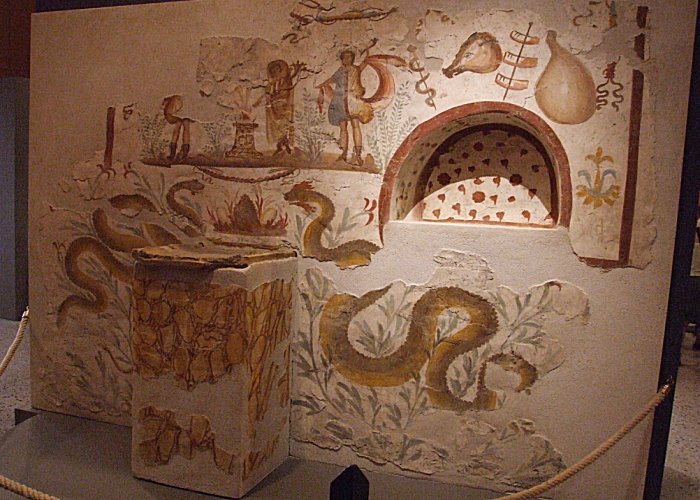 Household lararium in Pompeii. source
Household lararium in Pompeii. source
From the Etruscans, the cult of Lares was taken over by the Romans, who trusted them, worshiped, and perhaps even sometimes feared them. However, the true origin of these household gods remains unknown.
Lararia In Pompeian Homes
In many Pompeian houses, archaeologists discovered large and small shrines ('lararia') dedicated to the gods of the household.
Two dancing Lares hold raised drinking horns and are accompanied by the Genius (the personal protective spirit), who is dressed in a toga ( the garment of high-ranking Roman magistrates) and making a sacrifice. Beneath them is a serpent, often depicted in the lararium of the Romans.
Originally each household had only one Lar, usually a tiny bronze figurine depicting a youthful figure in dancing postures. Its dress was a short tunic or short robe, holding a drinking horn in one hand and a cup or cornucopia, a symbol of abundance and nourishment.
 Lararium from the House of the Vetti. source
Lararium from the House of the Vetti. source
The family's worship of the Lares was associated with the Penates, the gods of the warehouse. They protected the household and his immediate family and, therefore, the family's prosperity. The Lares Familiaris, on the other hand, protected all household members and enslaved people and were always linked to one particular place. When the family moved to another location, this spirit did not follow.
Slaves Used To Seek Protection Of Lares
The ancient Romans believed that they supervised the traditional norms in the relationship of family members and punished violators, especially masters who were too cruel to slaves. Therefore, enslaved people used to seek protection from their master's wrath at the hearth (or altar) of the Lar and actively participated in their cult.
Small statues of the Lares and Penates are usually found, one on each side of the central figure of Vesta, the goddess of the fire, home, and family, or the protective spirit Genius related to each man.
The Roman City Was Well Protected By Lares
The public Lares, which belonged to the state religion, had guardianship over city districts, roads, villages, crossroads, and military expeditions. A legend has it that the Lares and Penates were once the household gods of Aeneas, a Trojan hero and the mythical ancestor of the Roman people. The hero carried them out of Troy with his aged father, Anchises, and sailed to Italy.
Genius, the personal protective spirit accompanied by two lares. Source
The state had its own Lares (praestites), protecting the city's patrons. They had a temple and altar and were represented as men wearing military cloaks, carrying lances, and seated with a dog (the emblem of watchfulness) at their feet.
What kind of deities were these lares? As we know, the Romans had many public gods and goddesses. However, aside from them, the spirits worshipped privately at home played an important role.
A town's shops, factories, houses, and street corners highly respected the spirits' presence. Whether private or civic, the Lares figurines (usually in pairs) were always freshly painted, repainted, and treated with respect.
Written by – A. Sutherland - AncientPages.com Senior Staff Writer
Updated on May 21, 2024
Copyright © AncientPages.com All rights reserved. This material may not be published, broadcast, rewritten or redistributed in whole or part without the express written permission of AncientPages.com
Expand for referencesMore From Ancient Pages
-
 Unknown Ancient History Of Antarctica And It’s Lost Civilization – Secrets Beneath The Ice
Ancient Mysteries | Sep 7, 2015
Unknown Ancient History Of Antarctica And It’s Lost Civilization – Secrets Beneath The Ice
Ancient Mysteries | Sep 7, 2015 -
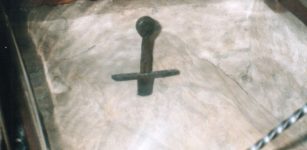 Mystery Of The Real Sword: How Did A Meter Long Sword End Up In Solid Rock?
Artifacts | Apr 15, 2019
Mystery Of The Real Sword: How Did A Meter Long Sword End Up In Solid Rock?
Artifacts | Apr 15, 2019 -
 900-Year-Old Crypt At Old Dongola: Magical Inscriptions And Mysterious Signs Found
Archaeology | Sep 12, 2015
900-Year-Old Crypt At Old Dongola: Magical Inscriptions And Mysterious Signs Found
Archaeology | Sep 12, 2015 -
 Giant Geoglyphs Near The Golden City Jaisalmer In India’s Thar Desert May Be World’s Largest Drawings – Who Made Them And Why?
Archaeology | May 28, 2021
Giant Geoglyphs Near The Golden City Jaisalmer In India’s Thar Desert May Be World’s Largest Drawings – Who Made Them And Why?
Archaeology | May 28, 2021 -
 Mysterious 4,000-Year-Old Table-Like And Unique Dolmen Discovered In Galilee Hills, Israel
Archaeology | Mar 6, 2017
Mysterious 4,000-Year-Old Table-Like And Unique Dolmen Discovered In Galilee Hills, Israel
Archaeology | Mar 6, 2017 -
 Coral Castle Is Among Most Fascinating And Mysterious Buildings In Florida
Featured Stories | Sep 17, 2018
Coral Castle Is Among Most Fascinating And Mysterious Buildings In Florida
Featured Stories | Sep 17, 2018 -
 Were Owl-Shaped Plaques Children’s Toys In Copper Age?
Archaeology | Dec 1, 2022
Were Owl-Shaped Plaques Children’s Toys In Copper Age?
Archaeology | Dec 1, 2022 -
 DNA Analyses Suggest The Plague Contributed To Stone Age Farmers’ Decline
Archaeology | Jul 10, 2024
DNA Analyses Suggest The Plague Contributed To Stone Age Farmers’ Decline
Archaeology | Jul 10, 2024 -
 Medieval Ring Found In Piast Stronghold Near Gniezno, Poland – Is A Unique Christian Artifact
Archaeology | Nov 28, 2019
Medieval Ring Found In Piast Stronghold Near Gniezno, Poland – Is A Unique Christian Artifact
Archaeology | Nov 28, 2019 -
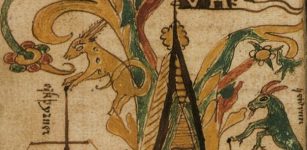 Eikthyrnir – Mythical Male Deer And Heidrun She-Goat Stand On The Top Of Valhalla
Featured Stories | Feb 11, 2019
Eikthyrnir – Mythical Male Deer And Heidrun She-Goat Stand On The Top Of Valhalla
Featured Stories | Feb 11, 2019 -
 Evidence The Khufu Channel Aided The Construction Of The Giza Pyramids Found – Scientists Say
Archaeology | Aug 31, 2022
Evidence The Khufu Channel Aided The Construction Of The Giza Pyramids Found – Scientists Say
Archaeology | Aug 31, 2022 -
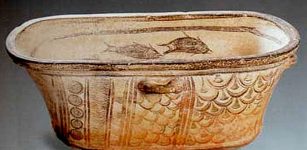 Was Hygiene Important For Our Ancestors?
Featured Stories | Feb 11, 2017
Was Hygiene Important For Our Ancestors?
Featured Stories | Feb 11, 2017 -
 First Genome-Wide Ancient Human DNA From Sudan Shines New Light On Nile Valley Past
Archaeology | Dec 20, 2021
First Genome-Wide Ancient Human DNA From Sudan Shines New Light On Nile Valley Past
Archaeology | Dec 20, 2021 -
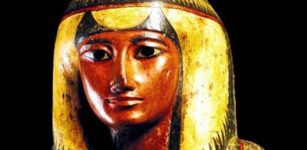 Sha-Amun-en-su – Tragic Fate Of Ancient Egyptian Priestly Singer’s Unopened Sarcophagus
Featured Stories | Jun 25, 2021
Sha-Amun-en-su – Tragic Fate Of Ancient Egyptian Priestly Singer’s Unopened Sarcophagus
Featured Stories | Jun 25, 2021 -
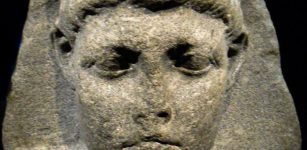 ‘Little Caesar’: Forgotten ‘King Of Kings’ Who Died Very Young
Featured Stories | May 11, 2020
‘Little Caesar’: Forgotten ‘King Of Kings’ Who Died Very Young
Featured Stories | May 11, 2020 -
 2,ooo-Year-Old Ancient Roman Treasure Found Underwater Of The Coast Of Portofino, Italy
Archaeology | Jan 31, 2019
2,ooo-Year-Old Ancient Roman Treasure Found Underwater Of The Coast Of Portofino, Italy
Archaeology | Jan 31, 2019 -
 Clovis People Invented ‘Fluting’ Ancient Stone Weaponry
Archaeology | Apr 5, 2017
Clovis People Invented ‘Fluting’ Ancient Stone Weaponry
Archaeology | Apr 5, 2017 -
 Hyperborea Or Atlantis Ruins – Underground Secrets Of The Sacred Lake On The Arctic Circle
Civilizations | Nov 17, 2014
Hyperborea Or Atlantis Ruins – Underground Secrets Of The Sacred Lake On The Arctic Circle
Civilizations | Nov 17, 2014 -
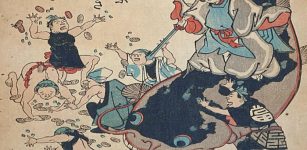 Odd Monster Namazu ‘Earth Shaker’ Was First Feared By People And Later Worshiped As Luminous Deity Repairing The World
Featured Stories | Feb 3, 2024
Odd Monster Namazu ‘Earth Shaker’ Was First Feared By People And Later Worshiped As Luminous Deity Repairing The World
Featured Stories | Feb 3, 2024 -
 Legendary Erlang Shen And His Third Seeing Eye That Could Distinguish Between Truth And Lie
Chinese Mythology | Aug 14, 2018
Legendary Erlang Shen And His Third Seeing Eye That Could Distinguish Between Truth And Lie
Chinese Mythology | Aug 14, 2018

